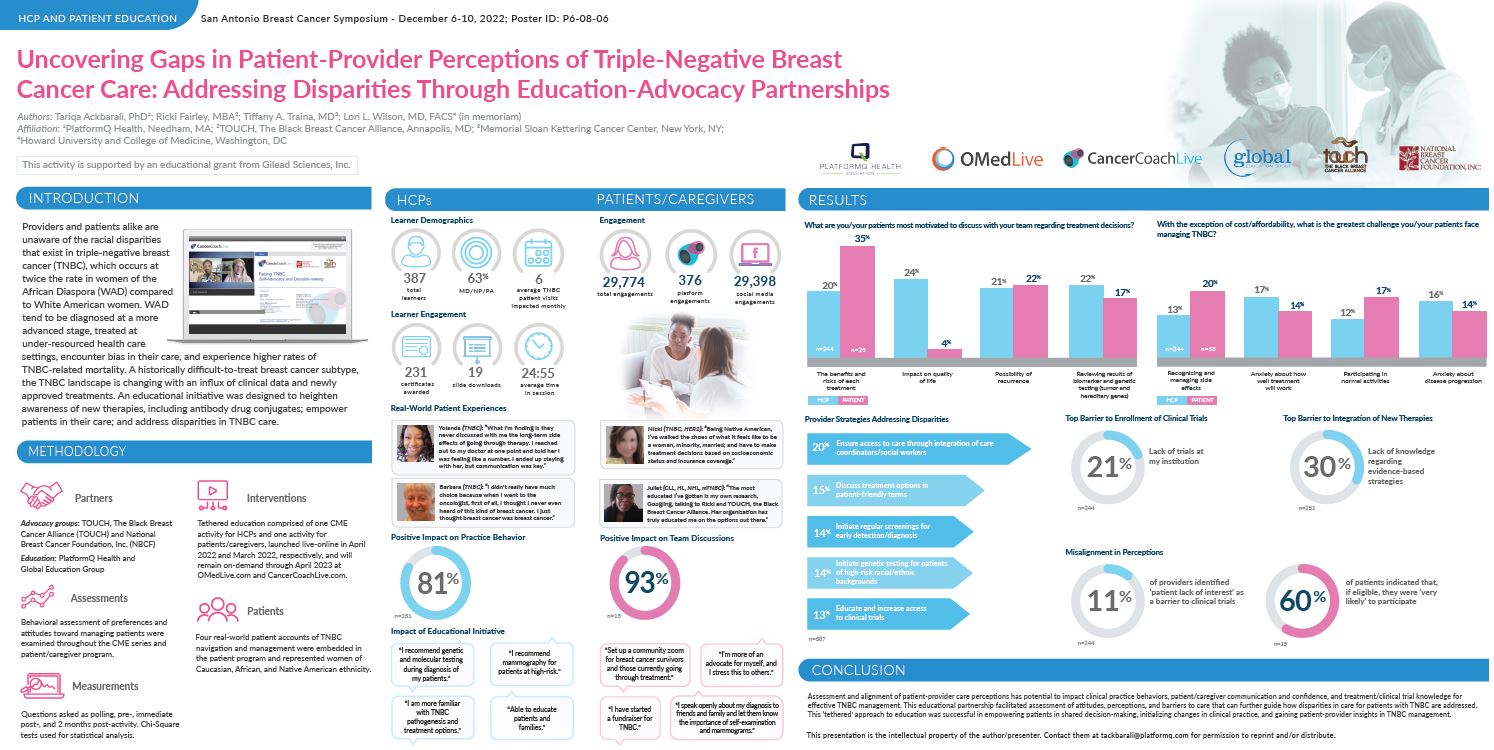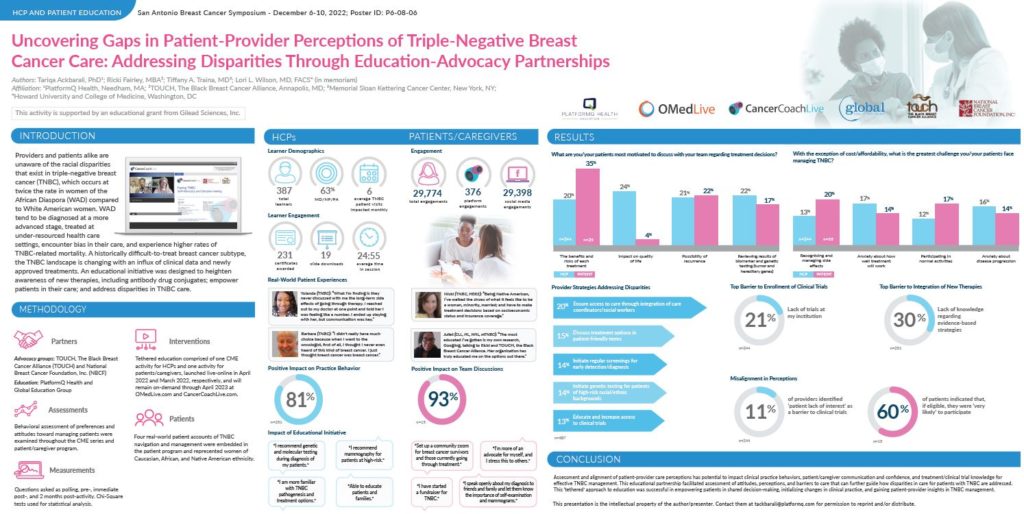Vast racial disparities exist in triple-negative breast cancer (TNBC), yet many patients and providers are aware of these issues. Women of the African Diaspora (WAD) are often diagnosed at a more advanced stage and experience higher rates of TNBC-related mortality. Though the TNBC treatment landscape has changed with the influx of new clinical data and newly approved treatments, there is much education needed to ensure patients and the medical community are aware of these advances.
To that end, TOUCH: The Black Breast Cancer Alliance and the National Breast Cancer Foundation partnered with PlatformQ Health to produce a tethered educational program comprising of one CME activity and one activity for patients and caregivers. The learning goals were to increase understanding of new therapies, to empower patients to advocate for themselves, and to address disparities in TNBC care. Launched live in the spring of 2022, the programs will remain available on demand through April 2023 at OMedLive.com and CancerCoachLive.com.
Featuring panelists from Memorial Sloan Kettering Cancer Center and Howard University and College of Medicine, the programs also included four real-world patient stories. These women shared compelling experiences and insights about navigating the disease.
Behavioral assessment of preferences and attitudes toward managing patients were examined throughout the programs. To gauge program outcomes, questions were asked as polling, pre- and immediate post, as well as two months after the educational activities. The findings were shared at a poster at the 2022 San Antonio Breast Cancer Symposium.

Click here to download the full poster.
Of the 387 learners who participated in the CME program to date, 81% reported that it had a positive impact on their practice behavior. The average time in session was 24:55, with 231 certificates awarded.
The patient/caregiver session was also a success, with 29,774 total engagements. 93% of participants reported that the session had a positive impact on team discussions.
One of the goals of the program was to highlight gaps in perceptions between patients and providers. Notably, surveys did uncover misalignment in perceptions. For example, 11% of providers identified ‘patient lack of interest’ as a barrier to clinical trials, yet 60% of patients indicated that, if eligible, they would be ‘very likely’ to participate in a trial.
Alignment of these perceptions has the potential to improve clinical practice behavior, communication between patients and providers, as well as treatment and clinical trial knowledge. This tethered educational approach has been beneficial for providing valuable insights to patients and providers in managing TNBC.

